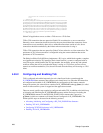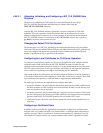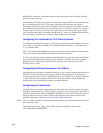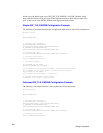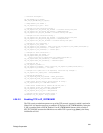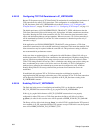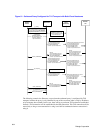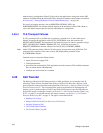303
Dialogic Corporation
4.24.3 Making Calls Using TLS
RFC 3261 defines the use of TLS as a transport mechanism by using the “sips:” scheme. When
using the “sips:” scheme in a URI (or in any other header that indicates the next hop of a message,
such as Route, Via, and others), RFC 3261 mandates the transport to be TLS. This is the reason
why TLS will not guarantee a secure delivery end-to-end, but only to the next hop.
There are several different scenarios of how a Global Call application can originate a call using
TLS. These include:
• Outbound proxy transport configured to be TLS
• Source address is “sip:” URI, destination address is “sip:” URI
• Source address is “sip:” URI, destination address is “sips:” URI
• Source address is “sips:” URI, destination address is “sip:” URI
• Source address is “sips:” URI, destination address is “sips:” URI
Outbound proxy transport configured to be TLS
When an outbound proxy is enabled, the transport protocol is determined by the
E_SIP_OutboundProxyTransport field in the IP_VIRTBOARD structure. If the application wishes
to use TLS transport, it must set the outbound proxy transport in IP_VIRTBOARD to the value
ENUM_TLS. The transport method is independent of the URI scheme of the destination address.
In the following scenario the outbound proxy transport is configured for TLS transport for all
outgoing requests. With both the outbound proxy IP address and hostname configured, a persistent
TLS connection will be established and reused for all subsequent outgoing messages.




